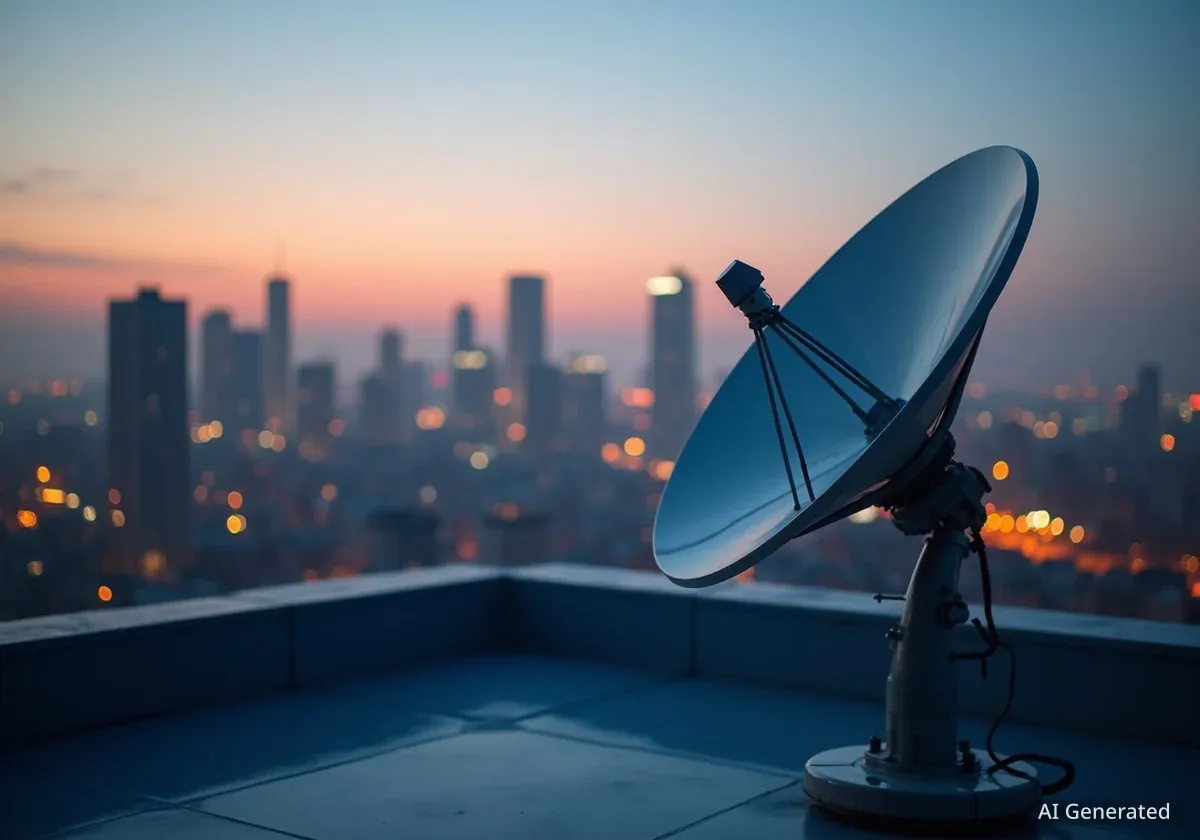Recent policy changes in the United States, including significant budget adjustments for NASA and a greater reliance on private companies, are reshaping the global space landscape. Concurrently, China's accelerated state-led space initiatives are creating a new era of competition, primarily focused on lunar exploration and establishing a strategic presence in orbit and beyond.
This dynamic has prompted other nations, such as Japan, to reassess their own space strategies, balancing long-standing alliances with the need for greater national independence and security in the increasingly contested domain of space.
Key Takeaways
- The U.S. has restructured its space policy, leading to budget cuts for some NASA programs while increasing dependence on commercial partners like SpaceX.
- China is rapidly advancing its space capabilities with ambitious projects, including the Chang'e lunar program and the Tiangong space station, positioning itself as a major space power.
- A bipolar competition between the U.S.-led Artemis program and China's International Lunar Research Station (ILRS) is emerging, focused on lunar resources and technological superiority.
- In response, Japan has introduced new space defense guidelines to protect its assets and is strengthening its domestic space industry through public-private partnerships.
US Space Policy Undergoes Major Restructuring
The United States' approach to space exploration and development is experiencing a significant transformation. In May 2025, a large-scale legislative package introduced substantial budget and staffing reductions for NASA, aimed at increasing governmental efficiency. According to reports, this led to the suspension of over 40 agency programs, some of which were dedicated to monitoring climate change.
This restructuring signals a strategic pivot. While some scientific missions have been curtailed, official administration messages have emphasized a renewed focus on ambitious exploration goals. These goals include a return to the Moon and an eventual human mission to Mars, framing these objectives as central to national pride and technological leadership.
The Rise of Commercial Space
The U.S. government's reliance on the private sector is not new but has accelerated significantly. For years, NASA has partnered with companies for resupply missions to the International Space Station. The current strategy expands this model, viewing companies like SpaceX as essential partners for launch services, satellite communications, and transportation, leveraging their lower costs and rapid innovation cycles.
This shift has been formalized through policy. In August 2025, an executive order was signed to ease regulations on commercial satellite launches and recoveries, further encouraging private enterprise in space. This move is intended to reduce development timelines and costs for government missions while fostering innovation.
Integrating Commercial Sector into National Security
The reliance on private industry extends deep into the national security apparatus. The U.S. Department of War has implemented a “Commercial Space Integration Strategy,” formally acknowledging the vital role of commercial assets in military operations. Similarly, the U.S. Space Force has stated that public-private partnerships are fundamental to its mission of achieving and maintaining space superiority.
This strategy highlights a dependency on a limited number of private providers for critical capabilities, a factor that has become a point of discussion in national security circles.
China's Rapid Ascent as a Space Superpower
While the U.S. reconfigures its approach, China has been executing a consistent, state-funded strategy to establish itself as a dominant force in space. The country has successfully launched a series of high-profile national projects that demonstrate its growing capabilities and long-term ambitions.
China's Flagship Space Programs
- Chang'e Program: A multi-phase lunar exploration project that has included orbiters, landers, rovers, and a successful sample-return mission.
- Tiangong Space Station: A permanently crewed, multi-module orbital station constructed and operated solely by China, positioning it as a key player in low-Earth orbit.
- Qianfan Constellation: A planned large-scale satellite internet constellation, similar to SpaceX's Starlink, aimed at providing global broadband services.
Militarily, China officially views space as the ultimate “strategic Commanding Heights.” This doctrine has driven a reorganization of the People's Liberation Army (PLA) to improve space-based operational capabilities, interoperability, and decision-making speed. According to U.S. officials, these centralized and rapid advancements are a growing source of concern for American strategic planners.
"China’s progress toward space resilience and responsive launch capabilities is a key part of its strategy to defend what it considers the ultimate high ground," noted a 2023 report from the Center for Security and Emerging Technology.
A New Bipolar Space Race for the Moon
The evolving policies of the U.S. and the rise of China have effectively created a bipolar structure in the space domain. This competition is most visible in the parallel efforts to return humans to the Moon and establish a permanent presence there.
On one side is the U.S.-led Artemis program, which is characterized by a coalition of international partners and a heavy reliance on commercial companies to develop landers and other infrastructure. On the other is China's proposed International Lunar Research Station (ILRS), a more centralized, state-led initiative that is also seeking international partners.
Both nations see the Moon as more than just a destination. It is viewed as a critical proving ground for technologies needed for deep space exploration, including missions to Mars. Furthermore, the lunar surface is considered a potential source of valuable resources and a strategic location for establishing political and technological dominance for decades to come.
Japan Bolsters Its Space Security and Independence
As the U.S.-China competition intensifies, key U.S. allies are adapting their own national strategies. Japan, which has a strong and long-standing space partnership with the United States, is taking steps to enhance its own independence and security in space.
Recognizing the increasing risks, which include orbital congestion and potential threats from anti-satellite weapons and cyberattacks, Japan’s Ministry of Defense published its first “Space Domain Defense Guidelines” in July 2025. This document outlines a concrete policy for protecting the nation's space assets and countering threats.
The guidelines build upon Japan's 2022 National Security Strategy and the subsequent Space Security Initiative. A central element of this new approach is the promotion of public-private collaboration to develop advanced, dual-use technologies that can be deployed for both civilian and defense purposes.
Japan is also taking a leading role in advocating for international norms and rules for the peaceful use of space. This includes proactive engagement on the issue of space debris removal through the United Nations. In addition, Japan is deepening its security cooperation by participating in multilateral frameworks like the Combined Space Operations (CSpO) initiative, which includes Australia, Canada, France, Germany, New Zealand, the United Kingdom, and the United States.





